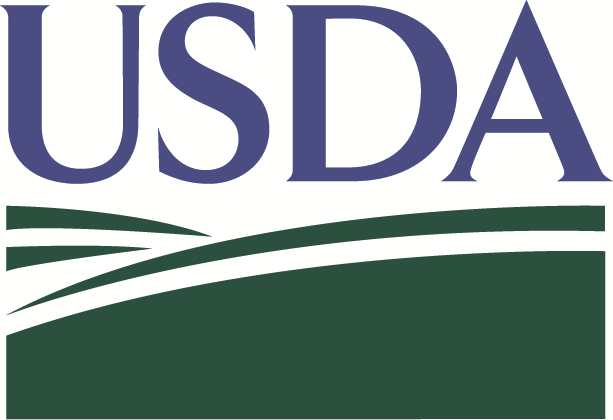ARS Agricultural Research Service National Program Assessment Survey (State, Local, Tribal Gov)
ARS Animal Health National Program Assessment Survey Form
ONP - 4 ARS-ONP Animal Health NP Program Assessment Evaluation Form for 0518-0042
ARS Agricultural Research Service National Program Assessment Survey (State, Local, Tribal Gov)
OMB: 0518-0042
OMB Control No: 0518-0042
Expiration Date:
 United States Department of
Agriculture
United States Department of
Agriculture
Agricultural Research Service
Animal
Health National Program Assessment and Priorities Evaluation Form
Welcome
to the ARS Animal Health National Program Assessment Survey. We
really appreciate you taking the time to take this survey. ARS
conducts National Program Assessments every five-years, so your input
is extremely important to our program's accountability. ARS is
charged with extending the Nation's scientific knowledge with
research projects in agriculture, human nutrition, food safety,
natural resources, the environment, and other topics affecting the
Nation. Research projects at the ARS are managed within 15 national
programs. Animal Health is one of those national programs. Your
response to this survey will allow ARS to assess the progress and
impact of our animal health research program and provide input for
future modifications as we prepare for the next 5-year cycle of
research. If you would like more information on our national
programs, please visit our web site at
http://www.ars.usda.gov/research/programs.htm.
For the
purpose of this assessment, impact is defined as research that has or
will
significantly influence the field of science (e.g., animal
health), create economic opportunities for producers and farmers, or
enable action and regulatory agencies to formulate actions, policies
and regulations to support American agriculture.
The results of this survey will be used and incorporated in the input phase of our national program planning cycle for National Program 103 Animal Health.
There are 14 questions asking you to rate the impact of the program and identify priorities. The survey should take about 15 minutes to complete. The information you provide will be kept strictly confidential by our Office of the Chief Information Officer by separating the data from any identifying characteristics. Please note there are required fields on this survey. In order for the results to provide targeted information, the survey will remind you to fill in these fields, if you skip them. At the end of the survey you will have a chance to add comments on matters of concern to you that may not be asked specifically in the survey.
According to the Paperwork Reduction Act of 1995, an agency may not conduct or sponsor, and a person is not required to a collection of information unless it displays a valid OMB number. The valid OMB control number for this information collection is 0518-0042. The time required to complete this information is estimated at 15 minutes per response due to the averaging of check boxes and test fields.
Q1. Please indicate your primary affiliation:
|
Producer or Farmer |
|
Private sector; e.g., Pharmaceutical |
|
Trade association |
|
Scientific association |
|
Federal government agency |
|
State government agency |
|
University |
|
Consultant |
|
Other |
Q2. Please identify your organization (e.g., U. of Minnesota)
Attachement
African Horse Sickness
African Swine Fever (ASF)
Anaplasmosis
Avian Influenza (AI)
Avian Leukosis Virus (ALV)
Avian Pneumovirus (APV)
Babesiosis
Bluetongue Virus (BTV)
Bordetella avium
Bovine Leukemia Virus
Bovine Respiratory Syncytial Virus
Bovine Spongiform Encephalopathy (BSE)
Bovine Tuberculosis
Bovine Viral Diarrhea Virus (BVDV)
Brucellosis
Cache Valley Fever
Chronic Wasting Disease (CWD)
Classical Swine Fever Virus (CSFV)
Coccidiosis
Coxiella burnetii (Q-fever)
Ehrlichia ruminantium (Heartwater)
Epizootic Hemorrhagic Disease (EHD)
Foot-and-Mouth Disease Virus (FMDV)
Gangrenous dermatitis
Infectious Bovine Rhinotracheitis (IBR)
Infectious Bursal Disease (IBD)
Infectious Laryngotracheitis (ILT)
Intestinal parasites of ruminants (Trichostrongylus, Ostertagia, Nematodirus)
Japanese Encephalitis virus
Lawsonia intracellularis
Leptospirosis
Mannheimia haemolytica
Malignant Catarrhal Fever (MCF)
Marek’s Disease Virus (MDV)Mastitis
Mycobacterium paratuberculosis (Johne’s Disease)
Mycoplasma bovis (Bovine TB)
Mycoplasma gallisepticum (MG)
Necrotic enteritis (NE)
Newcastle Disease (Low virulent/Endemic)
Newcastle Disease (Virulent/Exotic)
Nipah virus
Ornithobacterium rhinotracheale (ORT)
Pasteurella multocida
Peste des petits ruminants (PPR)
Piroplasmosis - Equine
Porcine Circovirus
Porcine Coronavirus (PEDV/PDCoV)
Porcine Reproductive and Respiratory Syndrome (PRRS)
Poult Enteritis Mortality Syndrome (PEMS)
Pox viruses (Parapox, Sheeppox, Capripox)
Reticuloendotheliosis virus (REV)
Rift Valley Fever
Schmallenberg Virus
Scrapie
Swine Influenza Virus (SIV)
Theileriosis (East Coast Fever)
Toxoplasmosis
Trichinellosis
Vesicular Stomatitis Virus (VSV)
West Nile virus
| File Type | application/msword |
| File Title | Biodefense Research Meeting Program Evaluation |
| Author | NPS |
| Last Modified By | SYSTEM |
| File Modified | 2019-07-09 |
| File Created | 2019-07-09 |
© 2025 OMB.report | Privacy Policy